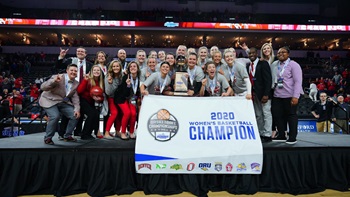USD Army ROTC recruiting training going strong thanks to additional university benefits
“A lot of people are talking about the scholarship,” Nelson said. “We’re finding new people interested in it every week.”
To qualify for the housing scholarship, students must agree to take part in physical fitness training three mornings a week, enroll in the one-credit courses Military Science 101 and 102, and participate in a field training lab on one Saturday of each month.
Nelson admits the introduction to ROTC program is challenging. “A few students are feeling a little overwhelmed,” he said. “Apparently 6:15 in the morning is a little too early to get up and exercise for some of them. However, as students participate and they get over the freshmen jitters, they find PT and other training events to be a fun and rewarding challenge.”
On the other hand, those students who enjoy their year-long experience can apply to become a cadet contracted to serve in the Army after graduation and receive additional financial benefits if they qualify for an Army ROTC scholarship, Nelson said. Those cadets who don’t qualify for scholarships can still contract with the Army and earn monthly stipends for living expenses, which are also available to scholarship students. After contracting as a cadet in the program, students participate in leadership and management training through ROTC while completing their college degree. A graduate is commissioned as a second lieutenant in the U. S. Army either on Active Duty, Army Reserve or in the National Guard.
Recruitment efforts at USD are especially important this year in light of the U.S. Army’s 2013 decision to close ROTC programs at USD and 12 other universities in 2015. Schools slated for closure were mostly in sparsely populated areas. After a campaign by the schools and elected officials in opposition to the closure, the Army canceled all closure plans and is now working with universities to try and improve overall commissioning numbers and conducting annual reviews of programs to track progress.
Nelson said one of the main evaluation benchmarks is the number of commissioned officers per year. “This year we had 11 commissioned officers, which is the highest number since 1998,” he said. “We plan to commission 10 this year but I hope to be in the 15 range by fiscal years 2016 and 2017.”
The U.S. Army informed schools that programs must commission an average of 15 officers per year to remain a viable ROTC host program. Programs can also produce fewer than 15 if they also commission officers with STEM (Science, Technology, Engineering and Math) degrees greater than the average for Army ROTC overall. Nelson said USD is just below the national average in this measure and he’s working on increasing the numbers of STEM majors in the university’s programs.
Other recruiting efforts include becoming more visible on campus and in the community. Among other activities, ROTC cadets help out on the field during all home football games, participate in the annual cleaning of the USD letters on the Vermillion bluffs, and introduce USD students to the joys of rappelling and other military skills throughout the semester by inviting student organizations to train with cadets.


